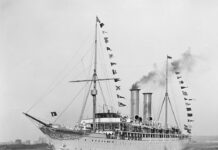During the final minute of each year, the world watches as the drop of the Times Square Ball greets the start of a new year for New York City and the rest of the Eastern Time Zone. With 2014 now already days old, many begin to peruse their resolution lists, viewing the new year as an opportunity to improve, to eat a little healthier, to study a little harder, or even to spend a little thriftier.
Dallas travelers will likely cross the last of those wishes off their lists, as two major events, the expiration of the Wright Amendment and the American Airlines – US Airways merger, bode well for the price of airfares in the metroplex and for travelers’ pockets.
The Wright Amendment, which restricted the ability of Southwest Airlines to fly non-stop beyond the state of Texas and and bordering states, will no longer plague Dallas travelers. In 1979, when Southwest Airlines refused to move its operations from Dallas Love Field to the newly-built Dallas-Fort Worth International Airport along with other airlines serving the city, Congressman Jim Wright, unable to coerce the airline to move, passed the Wright Amendment to protect the new airport, originally designed to serve as the focal point for the region. The amendment initially prevented Southwest passengers from traveling beyond the state of Texas or contiguous states- New Mexico, Louisiana, Arkansas, and Oklahoma- without first stopping and connecting at another airport. Though later modifications allowed Southwest to travel nonstop to Missouri, Alabama, Mississippi, and Kansas, the bill continued to curtail travel to popular destinations beyond these permitted areas.
The amendment also prevented the sale of through-ticketing – the practice of selling a ticket on a connecting flight. The prohibition of through-ticketing meant that passengers wishing to travel on Southwest to a destination outside the boundaries would need to fly to another airport, leave security, collect their baggage, and then purchase another ticket to complete their trip, a cumbersome process sharply increasing the difficulty of flying from Dallas to anywhere outside the boundaries on Southwest Airlines. Passengers that wished to travel nonstop to most destinations maintained only one choice – American Airlines – which is headquartered in Fort Worth and operates its largest domestic hub at DFW Airport. As a result, for many destinations, American largely dictated its own airfare price, hurting the thrifty consumer.
In 2006, after two years of open opposition against the amendment from Southwest Airlines, all relevant parties reached an agreement for its repeal, immediately allowing through-ticketing while setting a later date, October 13, 2014, for the allowance of direct flights from Love Field across the country.
And while Southwest CEO Gary Kelly seems relatively non-committal regarding the airline’s post-amendment schedule, Terry Maxon of the Dallas Morning News speculates, at the very least, that Southwest would immediately offer service to some of its other focus cities, which include “Chicago, Las Vegas, Orlando, Denver, Phoenix, and perhaps New York,” all sizable markets. Flying to these markets would place Southwest in direct competition with American Airlines, likely resulting in lower fares for customers.
The highly-publicized “Southwest effect” claims that the entry, or even the threat of entry, of Southwest Airlines into a new market, such
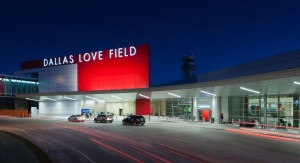
as those the airline could offer new service to after the amendment’s expiration, precipitates a drop in airfares and an increase in service, both beneficial for the consumer. While the relevancy of this theory in modern aviation is still debated, being Southwest has evolved from the airline it was at the theory’s inception years ago, it remains apparent that the presence of Southwest, considered a “low-cost carrier,” effectively tempers the rise of airfares.
Southwest could also gradually expand to include other markets, including those acquired- namely, Atlanta Hartsfield-Jackson International Airport, the world’s busiest airport- from the purchase of AirTran Airways only a few years ago.
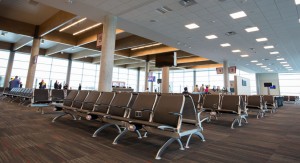
Now over three years from announcing its intention to acquire AirTran, Southwest plans to fully integrate the two airlines in 2014, providing those already flying Southwest the opportunity to travel to a diversity of new locations. While merging airlines generally plod through a couple of lean years, working through the growing pains of blending two entities, Southwest seems to be targeting 2014 as the end of its transition phase. The completion of the merger should help alleviate some of the problems with delays, possibly stemming from the process of blending the two airlines, Southwest has encountered recently.
Dallas Love Field, where Southwest operates from, opened a portion- twelve of its
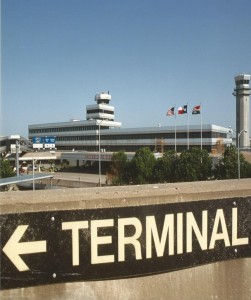
planned twenty gates- of its newly renovated terminal last April, and plans to complete construction before the expiration of the Wright Amendment to prepare for an increased volume of passengers. Southwest will possess at least sixteen, possibly eighteen, of those twenty gates, giving the airline a wealth of departures from the airport daily. Kelly believes the airline could, each day, offer approximately “10 [departures]” per gate, or over 160 total flights from Love Field, compared to the 120 it currently flies.

The availability of non-stop flights to other prominent business markets, such as New York, Chicago, or Los Angeles, should expand Southwest’s passenger audience, which has traditionally targeted the leisure traveler as opposed to the business traveler. The airport’s central location in the heart of Dallas makes commuting to it far more convenient than traveling across the metroplex to DFW for many passengers, who could opt to travel via Southwest instead of American. Passing through Love Field, compared to navigating through the monstrosity that is DFW, also proves considerably easier and more attractive. This should only increase the rivalry between the two airlines, boding well for the consumer’s wallet.
Whatever Southwest plans, their intentions appear quite drastic. The company, on October 14, 2013, unveiled a countdown at its headquarters until the amendment’s expiration a year later. Advertisements announcing the impending change, seeking to boost consumer awareness, lace the area surrounding the airport, suggesting the airline will offer an array of new flights. Watch for the release of the post-amendment schedule within the next month or two.

Across Interstate 35, American Airlines appears ready to battle with Southwest. American and US Airways officially merged, exiting Chapter 11 bankruptcy, on December 9, 2013, creating an aviation titan far more able to compete domestically and internationally. As a result, the Dallas area now harbors the world’s largest airline – in addition to Southwest, the world’s fourth largest – a major plus for the local economy, which the two airlines grease with jobs. And using history as an example, American’s presence at DFW should only expand in the coming years.
Studies show that, following a merger, airlines tend to bolster service at their main hubs – which DFW is for American – while trimming service at lesser ancillary hubs. Delta and United increased domestic service from Atlanta and Houston, respectively, following their mergers with Northwest and Continental. So while ominous for cities like Phoenix or Charlotte, which served as hubs for US Airways but represent less important positions for the new airline, in the long run, the merger should only boost service from DFW, which serves the nation’s fourth largest metropolitan area.
Charlotte, in particular, mainly functions to shuttle connecting passengers to their destinations, while
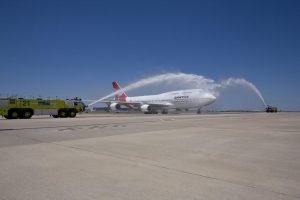
DFW houses a significant origin-and-destination population, or those who either start or end their trip in Dallas. Because of this, DFW appears fairly secure as a hub for American Airlines.
According to the Associated Press, “American Airlines and US Airways are two pieces that fit together almost perfectly” due to their considerable lack of network overlap. The two airlines compete aggressively on only one route – Los Angeles to Phoenix – so the merge should not significantly reduce competition. Rather, cities like Dallas stand to gain additional service from a reinvigorated airline.

DFW Airport, like Love Field, prepares for the expiration of the Wright Amendment by increasing service to an arena that Southwest could never directly combat: international markets.
Even once the amendment expires, restrictions remain preventing Southwest to fly internationally from Love Field. While Southwest plans an international terminal to serve many Caribbean and Mexican

destinations at nearby Houston Hobby Airport, it can never battle head-to-head for international passengers with other carriers from Dallas. DFW’s recent addition of Etihad Airways and Qatar Airways adds to its already impressive international pallet – which includes fifty-eight foreign destinations – and continues its pattern of adding international carriers, such as Emirates, to the airport. For the Dallas traveler? A vast selection of international choices continues to grow, increasing DFW’s global footprint and providing an alternative choice to flying American Airlines when venturing outside the United States.
DFW progresses on some renovations of its own. Built in 1973, the airport’s terminals are naturally dated. DFW recently completed its first phase of construction, re-opening a re-designed section of Terminal A in its seven-year quest to update each of the airport’s four older terminals (excluding the stunning Terminal D, which needs little work, completed in 2005).
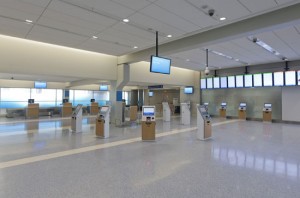

The construction also entails building a DART rail station in Terminal A, somewhat countering the natural advantage Southwest has with Dallas residents located closer to Love Field than to DFW. The message? DFW, in conjunction with a new American Airlines and other entrants, is ready for competition, a competition promising for travelers.
In a sea of broken New Year’s resolutions, it appears traveling a little cheaper represents a goal easily attainable for Dallas-area residents. Wherever your journeys take you in 2014, may you arrive there with a few extra dollars in your wallet!




